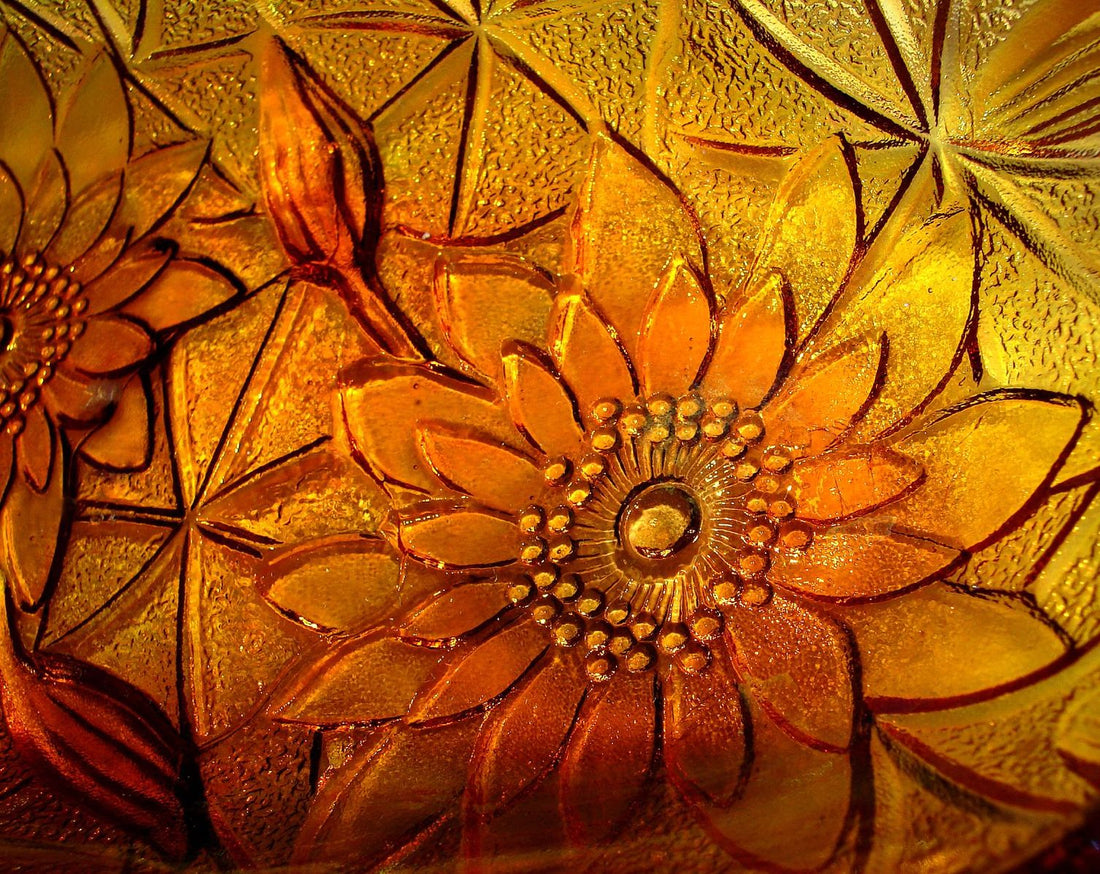The Timeless Beauty of Carnival Glass: A Collector’s Guide

Carnival glass isn’t just a pretty sparkle on a shelf—it’s a piece of history that still has collectors swooning. Born in the early 1900s and still dazzling over a century later, each piece holds its own story and a shine that refuses to fade.
What Is Carnival Glass?
That rainbow-like glow we all love might feel like magic, but it's actually what happens when you spray metallic salts onto glass while it is still piping hot. And, unlike delicate hand-blown glass that felt too fragile for daily life, carnival glass was meant to be practical as it was pretty... We're talking eye-catching enough to impress at a dinner party and sturdy enough to use in your everyday life.
A Brief History
Carnival glass started showing up around 1908 when companies like Fenton, Northwood, and Imperial Glass came up with the idea to start producing glass that was as dazzling as expensive hand-blown glass, but could be sold at a price that most anyone could afford.
The name “carnival glass” wasn’t just clever branding; it came from the fact that these shimmering pieces were often given away as prizes at fairs and carnivals. By the 1920s, carnival glass became a familiar sight in kitchens and dining rooms across America, and while popularity dipped during the Great Depression, a second wave of appreciation in the 1950s happened when people looked back and realized just how much charm and history the glass carried.
What Makes Carnival Glass Unique

- It's iridescence or that metallic sheen that changes with the light.
- Pressed patterns like delicate florals or bold geometric designs.
- While orange-gold is a common shade that most people know, be on the lookout for marigold, amethyst, green, blue, and the rare and coveted reds.
- Shapes cover just about everything from plates, bowls, vases, and even lampshades that are often known to be finished with ruffled edges or scalloped rims for a little extra flair.
Collecting Carnival Glass
Carnival glass brings beauty with a side of nostalgia... It’s a way to hold a piece of history in your hands and, if you’re new to the hunt, we've got a few tips to get you started:
- Learn the makers: Knowing names like Fenton, Northwood, Imperial, and Dugan can help you understand the history and value of a piece.
- Check the condition: Look for chips, cracks, or worn-down iridescent shine that will detract from the value of any piece.
- Pay attention to patterns: Some designs, such as Hobnail or Grape and Cable, can be harder to find and are also more sought after.
- Do your homework on colors: Limited runs can mean that unusual shades, such as deep reds, will draw more serious interest from collectors.
Tips for Spotting the Best Carnival Glass
- Look for any chips, cracks, or dulled iridescence that would detract from a piece’s value.
- Keep an eye out for patterns, such as Hobnail or Grape and Cable, to find more rare and highly sought-after pieces by collectors.
- Don’t overlook color and remember that certain shades were made in limited runs, which can single-handedly increase the value of a piece.
Why Carnival Glass Still Matters
Carnival glass isn't just a collector's dream. It harks back to a time when beauty, practicality, and affordability could all co-exist. And, more importantly, didn’t have to spend a fortune or break the bank to own a piece that could be used every day or put on display... Giving you the opportunity to admire its beauty while catching the light and drawing a smile from anyone who saw it.
Conclusion
Carnival glass is a testament to the fact that beauty and accessibility can coexist. With its unique colors, patterns, and history, it’s no wonder that collectors continue to hunt down and display these lovely treasures today.
Don't forget to follow on Instagram for updates on new items, blog posts, and more!




